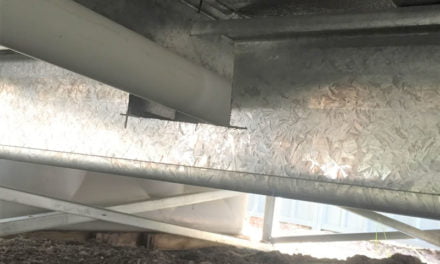Overcoming early challenges and forging a path to success. By Nicky Ainley
Now in its 20th year, Design Pine continues to forge its way as a market leader in the Australian timber industry. A concept that came to members of ITI Australia following the discontinued use of a popular exterior timber, Design Pine has stood the test of time, not only in its range but also in its brand name and associated reliability. Overcoming a series of challenges and setbacks the ITI Australia team share a pride in a product that has become, and continues to be, one of the most trusted by Australians.
IN THE BEGINNING
The development of Design Pine started more than 20 years ago as Sydney was gearing up to welcome the world for the Sydney 2000 Olympics.
“It all started in 1998 when I could see an opportunity in the market for a quality outdoor building product for exterior entertaining areas,” Craig Davies from ITI Australia, creator of Design Pine said.
The idea came to Davies following a ban on the use of Oregon timber, a Class four timber. Oregon was incredibly popular, particularly in Sydney and Adelaide and reached its prime use in the mid 90’s. It was particularly popular for external use including patios and cantilever joists among many other things,
“They were having a lot of problems with cantilever decks falling off the sides of houses because they were rotting at the brickwork, so they banned the use of Oregon for external applications,” Davies said.
“Following that, all the market was left with was hardwood or treated pine and treated pine never used to perform particularly well, it used to twist a lot. So, I saw an opportunity for a high-grade external structural product.” It was from there Davies began work with Pacific Timber (now known as Niagara Timber New Zealand), to develop a new product for external use.
“We created some initial products in various sizes, and we got them structurally tested at the University of Canterbury in Christchurch in New Zealand as there were no standards in Australia for structural finger Joint products.”
Following the testing in NZ, Craig engaged Charlie Herbert, formally the chief timber inspector for NSW Forestry Commission, to assist with the structural standards locally.
“He supported what we had done so we brought a lot of pink primed in,” Davies said.

Above: The premium exterior timber product in modern and traditional housing, an example of a luxury build using Design Pine in Perth, WA.
THE OLYMPIC TEST
An opportunity arose in 1999 for ITI Australia to supply the structural pink primed timber to the athlete’s Olympic Village for the Sydney 2000 games. The product was to be used for the demountable structures, the athlete’s accommodation, all of which were to have pergolas constructed out the front for a small outdoor area. The product was supplied through Harper Timbers and construction was carried out.
“Ian Halliday contacted me after we had supplied the product and said they were having a problem with the paint peeling off,”
Davies continued, “So I met him at the Olympic Village and oh my goodness!”
“In these pergolas which they had erected out of the pink primed, large blisters had developed. You could pop these blisters and you could peel the paint off like strips of wallpaper!
“There was a big panic as the Olympics were coming and we needed a solution.”
After discussions with the paint suppliers, Davies was alerted to the fact that the primer was not a genuine primer, it was a ‘holding or transport primer’, a coat that was put over the timber to keep it in good condition while it was transported and delivered to site. From the paint suppliers’ point of view the product would still require sanding, priming and painting, not what ITI Australia was looking for with their primed product.
“That was completely mad!” Davies said.
According to the paint suppliers, Davies was told the treatment on the wood made it impossible to put a pre-primed paint on it that would stick, however Davies and the ITI Australia team were determined not to give up.
BACK TO THE DRAWING BOARD
Following the incident at the Olympic Village, Davies and his team then spend the best of the next four years working on their product.
This included resolving the paint issue which saw Davies working alongside John Kilby from Resene Paints in New Zealand who spent time developing a paint exclusively for ITI which would be a genuine primer. At the time there were a number of similar complaints in New Zealand regarding weather board, so the timing was opportune.
“There were some failures along the way but once we got it all right, then we decided that, ok, if we are going to do this, we are going to launch it properly,” Davies continued.
At that point, Davies along with Paul Shadbolt, Justin Newman and the ITI team decided on the branding ‘Design Pine’. They knew they had what could be a market leading product on their hands.
“That’s when we dramatically broadened the range of product, that was really the inception, and it has grown further from there.”
DESIGN PINE ‘BLUE’
At the point of launch for Design Pine, primed timber in the existing market was distinctly pink. The same colour that ITI had presented the product to the Olympic Village which had not ended the way they had hoped. So as part of the official product launch, ITI made a bold decision to change the colour to blue.
“We wanted to differentiate ourselves from the bad, bad days of the pink primed,” Davies said.
“There were a lot of failures in the market with the product.”
“The change of colour did cause some issues with some people. Some criticised us for having a different colour.”
However, the team stuck to their blue colour, which was chosen as a pigment derived from white which would be easy enough to cover but would also require two coats to be completely covered which would drive people to paint it properly and get the desired finish.
And that, according to Davies, is where it all really started. With their distinct blue, four years after ITI went back to square one following their pink Olympic failure, Design Pine was launched and took on the market with nothing but success.
“Four years it took to get not only the primer, but the application, the branding the packaging and everything right,” Davies said.
We wanted to make sure before we rushed into the market, we had everything covered.
“We even had the product specification which was 30 pages long for people to adhere to.”

Above: The premium exterior timber product in modern and traditional housing, an example of a luxury build using Design Pine in Perth, WA.
GROWTH AND DEVELOPMENT
For over 20 years now, Design Pine has expanded its range and become iconic with its signature blue primed product and with the expansion it has also become more streamlined.
There were originally more than 12 producers in New Zealand which has now been reduced to three in New Zealand and ITI Chile.
Over its first 20 years, ITI have put nearly one million cubes into the market, some into the US, and consumed about five million litres of paint without failure.
“It’s awesome,” Davies said as he reflected on the achievement over the past two decades.
“We knew we had a successful product because we did it properly. We never knew where the market would go with it, we just continued to broaden the range and respond to the market and now it’s a really well-known brand.
“We worked a lot with Australian standards and with the industry associations to build the product and the specifications. We did it properly all the way along.
“For example,” Davies continued, “we worked with TABMA and we made our profile drawings to TABMA specifications while others were doing their own things, we made sure everything was industry standards. And we continue to change and develop to the market and the industries requirements,”
“It has been very successful.”
ITI maintained their path when it came to Design Pine, overcoming battles around the use of LOSP treated timber externally and the initial judgment of the now iconic ‘blue colour’.
“There were a lot of things over the years, but the success has been remarkable.
“We continue to work on it, making it better. We continue to audit the product; we make sure it always meets a standard. We never say, ‘there it is’ we continue to monitor and develop the product.
TODAY
Design Pine remains a market-leading diverse product that is used in a range of applications across Australia and the world.
From residential to commercial construction the versatility of Design Pine means it is used for a wide number of building projects.
Davies believes the timing in many ways was opportune with the growth of the alfresco and ‘outdoor’ living focus which has grown exponentially in the past 20 years in Australia. It’s the market that Davies and the ITI team could see growing however even they weren’t to know just how large that market would become.
“For residential, the outdoor space has become so critical in any sale, it can now make or break the look and price of a property,” Davies said.
The versatility of what Design Pine have to offer means everything from outdoor structures, such as pergolas, cladding and fences are constructed offering durability and resistance to the elements, to furniture and joinery. Design Pine’s workability make it a popular choice for outdoor furniture, cabinetry, and other joinery projects.

Above: The combination of structural and non-structural sizes make Design Pine perfect for any application.
WHY DESIGN PINE?
Design Pine offers a number of benefits in its choice, more of which have developed as the range and products have over the decades.
Pine is a fast-growing, renewable resource making it highly sustainable. ITI Australia sources its pine from sustainably managed plantations, ensuring environmental responsibility. Additionally, Pine trees absorb carbon dioxide from the atmosphere, and using pine products helps lock away carbon, contributing to lower greenhouse gas emissions. In its production, pine has several environmental benefits primarily its low environmental impact. The production and processing of pine timber require less energy compared to many alternative materials, reducing the overall environmental footprint.
Over the years, Design Pine has proven itself in the areas of versatility and usability. It is appropriate for a wide use of applications including framing, flooring, decking, cladding, and furniture and has an ease of workability making it easy to cut, shape, and join, making it an ideal material for both DIY projects and professional construction.
ITI Australia offers treated pine products that are resistant to termites, decay, and other environmental factors, enhancing the durability and lifespan of the timber. Plus, Pine has good strength-to-weight ratios, making it suitable for various structural applications while being lighter and easier to handle compared to many hardwoods.
Add on to this the cost-effectiveness of the product. Pine is generally more affordable than many other timber species, providing a cost-effective solution for a wide range of building and design projects. The combination of affordability, durability, and aesthetic appeal offers excellent value over the long term, particularly when properly maintained.
THE FUTURE
The future is bright for ITI Australia’s Design Pine as it enters its third decade as a market leader in structural and decorative timber.
For more information, visit: https://designpine.com.au











